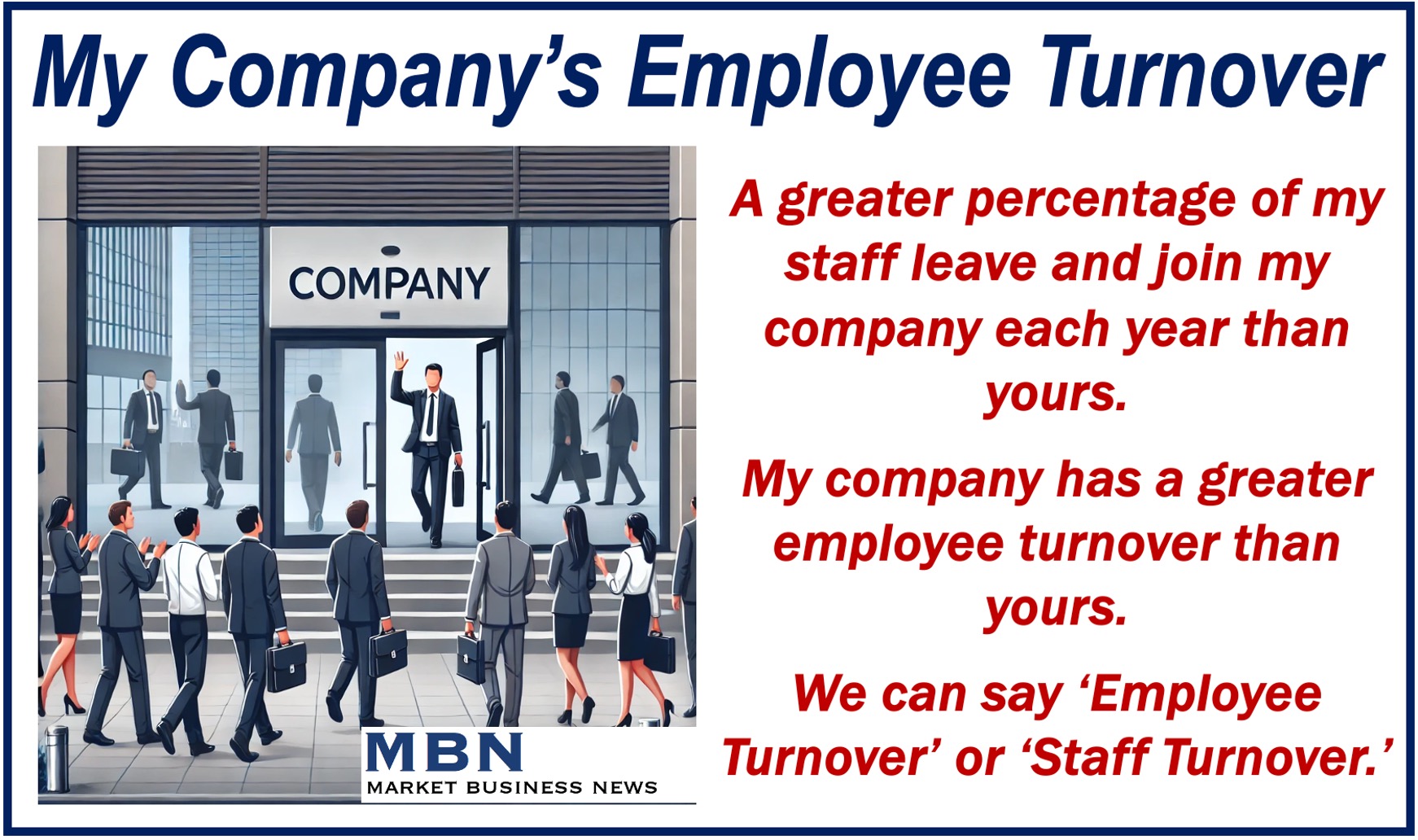The total amount of sales your company makes over a set period is its Turnover, which is also known as gross revenue or income.
If you have a bicycle shop which sold $500,000 worth of bikes and spare parts last year, you could say, “My bike shop had a turnover of $500,000 last year.”
The Munich Business School in Germany has the following definition of the term:
“Turnover refers to the total revenue that a company generates through its normal business activities within a certain period, usually within a financial year (annual turnover) or quarter. This includes the sale of goods, products or services before any costs or expenses are deducted.”
“Turnover is a key indicator of a company’s operations and success, as it provides an indication of how effectively the company is carrying out its main activities and generating revenue.”
Two Interpretations
Turnover can have two main interpretations, depending on the context. It may refer to revenue or movement. Let’s take a closer look at each interpretation:
-
As Revenue
For many businesses, particularly in Europe and Asia, turnover simply refers to your company’s total sales revenue within a specific period.
This includes all the income you generate from selling your products or services, as explained earlier with the bicycle shop example.
Imagine it as the total amount of money that flows into your business before any expenses and taxes are deducted.
Think of your business like a giant funnel. Customers pour money in through the top (sales), and various costs like rent, supplies, and salaries flow out the bottom (expenses).
Turnover sits right at the top, representing the gross amount that enters before anything is taken out.
It is important to distinguish turnover from profit. While turnover reflects your income stream, your profit is what remains after subtracting all your operating expenses from that total.
-
As Movement
Beyond sales, turnover can also represent the rate of change or movement within a company.
This is most commonly used in the context of employee turnover. Here, turnover refers to the number of employees who leave your company within a given timeframe, and how quickly you replace them.
High employee turnover can indicate several things. It might suggest challenges with employee satisfaction, leading to frequent departures. Conversely, it could also signify a booming industry with rapid growth, necessitating constant recruitment.
The opposite of a high employee turnover is high employee retention. If your company has high employee retention, it means that your workers generally stay with you for a long time. If it had a high employee turnover, it would mean the opposite – they do not stay long.

Why is Turnover Important?
Turnover is a valuable metric for understanding your well or badly your business is doing.
-
As Revenue
Tracking turnover over time allows you to monitor sales growth, helping you assess whether you’re attracting more customers and generating higher revenue.
Additionally, comparing your turnover with industry benchmarks can highlight areas for improvement in your sales strategy.
-
As Employee Movement
A low employee turnover rate indicates strong retention and contributes to a more experienced workforce.
In contrast, high turnover can increase recruitment and training costs and may point to underlying issues in your company culture.
Managing Sales Turnover
Start by developing a robust sales strategy. A well-structured marketing approach that targets the right audience and uses efficient marketing techniques can significantly boost sales.
Additionally, customer satisfaction should be a top priority, as loyal customers will continue to bring consistent revenue.
Managing Employee Turnover
Investing in employees is crucial. Competitive salaries, growth opportunities, and a positive work environment help retain talent.
When your workers feel valued and supported, they are more likely to want to stay with you for the long term.
Furthermore, conducting exit interviews with departing employees can uncover the reasons why people leave and guide improvements in retention efforts.

Etymology of Turnover
The term etymology refers to the origin of words and how their meanings and usages evolved over time.
The Etymology Online Dictionary says that the word turnover has its roots in the 1650s, coming from the action of “turning something over,” which originally meant flipping something from one side to another. Over time, this basic idea evolved in business contexts.
-
Sales
In sales, turnover began to describe the volume of goods or revenue being cycled through a company, first recorded in 1879.
-
Employees
Later, in 1955, it came to also refer to the cycle of employees leaving and being replaced.
Both meanings share the core idea of rotation or change over time.
Other contexts
We can use the term in other contexts. Let’s have a look at some of them:
-
Sports
In team sports like football, basketball, or soccer, a turnover refers to when possession of the ball shifts from one team to another due to a mistake or violation.
-
Pastry
A turnover is also a type of pastry, where dough is folded over a filling, often in a semi-circular shape.
-
Inventory
In supply chain management, inventory turnover describes how frequently a company’s stock of goods is sold and replaced over a period.
-
Government and Elections
It may describe the replacement or changeover of political leadership or elected officials over time.
For example, “The high turnover of elected officials in the recent elections has led to significant changes in government policy.”
-
Banking and finance
It can describe the total value of securities or assets traded over a period.
Each of these uses revolves around the idea of change, replacement, or cyclical movement.
Final Thoughts
By understanding and managing turnover effectively, you can optimize your business’ performance and ensure its long-term success.
Remember, both sales and employees are vital components of a thriving company. Monitor your turnover rates in both areas and use them as stepping-stones to achieve your business goals!
